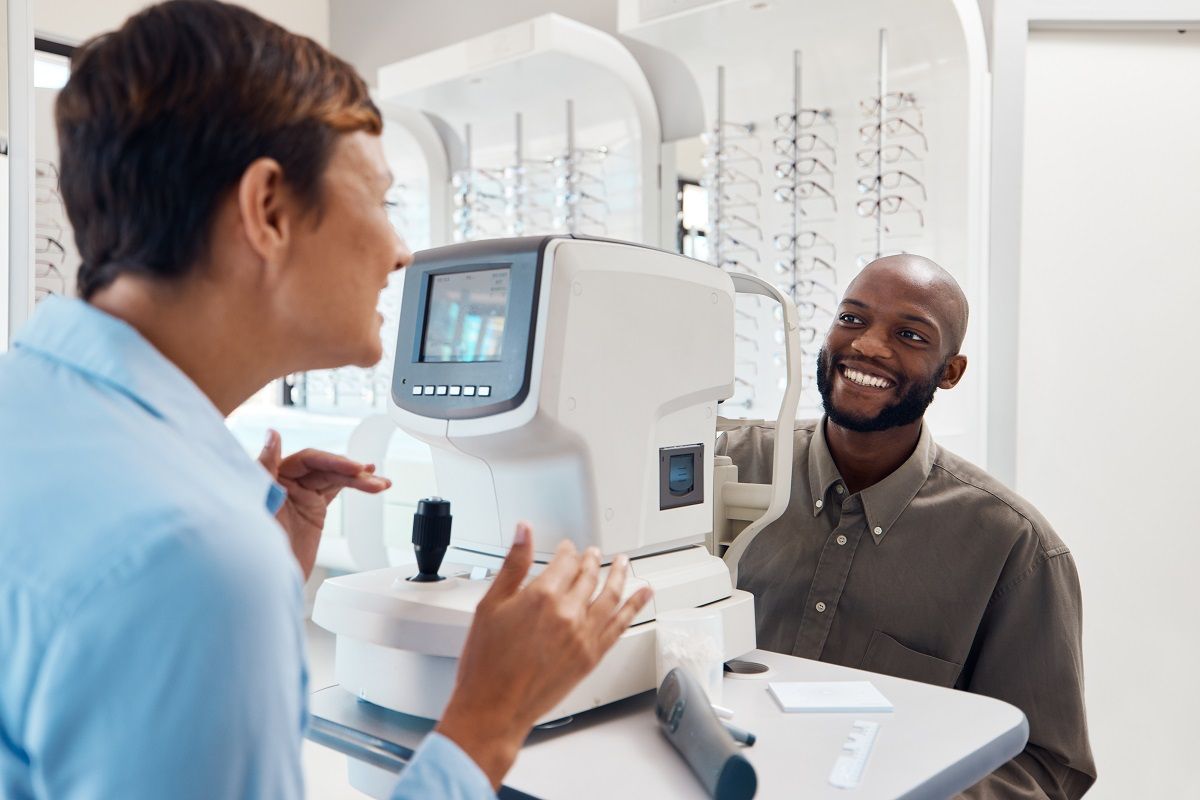What are the symptoms of solar retinopathy?
Solar retinopathy is an eye condition caused by damage to the retina from staring directly at the sun or other bright light sources, such as during a solar eclipse. The symptoms of solar retinopathy can vary depending on the extent of the damage, but common symptoms include:
- Blurred Vision: One of the most common symptoms, vision may become blurry, especially in the center of the field of vision.
- Central Scotoma: This is a dark or blind spot in the center of the vision, making it difficult to see objects directly in front of you.
- Distorted Vision (Metamorphopsia): Objects may appear distorted or wavy, and straight lines may appear bent or curved.
- Photophobia: Increased sensitivity to light, making it uncomfortable or painful to be in bright light.
- Difficulty in Seeing Colors: Colors may appear faded or less vibrant than usual.
- Afterimages: Seeing a persistent image after looking away from a bright light source, which can last for minutes to hours.
- Visual Discomfort: Some people may experience general discomfort or pain in the eyes.
- Reduced Contrast Sensitivity: Difficulty distinguishing between different shades of light and dark.
Symptoms of solar retinopathy typically develop within hours to days after exposure to intense light and can range from mild to severe. In some cases, the symptoms may improve over time, but in others, the damage may be permanent. It’s crucial to avoid staring directly at the sun or bright lights without proper eye protection to prevent this condition. If symptoms of solar retinopathy are noticed, it’s important to seek medical attention promptly.
What are the causes of solar retinopathy?
Solar retinopathy is caused by direct exposure of the eyes to intense sunlight, particularly the ultraviolet (UV) and visible light rays from the sun. The primary causes include:
- Staring Directly at the Sun: The most common cause is staring directly at the sun, especially during a solar eclipse, when the sun’s brightness may seem less intense but is still highly damaging to the eyes.
- Inadequate Eye Protection: Viewing a solar eclipse or other bright light sources without proper eye protection, such as eclipse glasses or welder’s goggles, can cause solar retinopathy.
- Use of Optical Instruments: Looking at the sun through binoculars, telescopes, cameras, or other optical instruments without appropriate filters can focus and intensify the sunlight, leading to severe retinal damage.
- Prolonged Exposure: Even brief exposure to intense sunlight without protection can cause solar retinopathy, but prolonged exposure significantly increases the risk.
The damage occurs when intense light from the sun or another bright light source is focused on the retina, the light-sensitive layer at the back of the eye. This concentration of light generates heat and causes a photochemical reaction, which can damage the retinal cells, particularly in the central area called the macula. This damage can lead to symptoms such as blurred vision, central scotoma (a blind spot in the center of vision), and other visual disturbances associated with solar retinopathy.
What is the treatment for solar retinopathy?
The treatment for solar retinopathy primarily focuses on managing symptoms and supporting the eye’s natural healing process, as there is no specific cure. The condition often improves over time, but recovery can be slow, and some visual deficits may persist. Here are the key treatment and management strategies:
- Rest and Protection: The most important step is to avoid further exposure to bright light. Resting the eyes and protecting them from intense sunlight or bright lights is crucial to prevent additional damage.
- Observation and Monitoring: Solar retinopathy often improves on its own over several weeks to months. Regular eye exams with an ophthalmologist are important to monitor the healing process and assess any lasting damage.
- Use of Eye Drops or Anti-inflammatory Medications: In some cases, doctors may prescribe anti-inflammatory eye drops or medications to reduce inflammation in the eye, though their effectiveness can vary.
- Low Vision Aids: If permanent vision loss occurs, low vision aids, such as magnifying glasses or special lenses, can help improve the quality of life by enhancing remaining vision.
- Supportive Care: Patients may benefit from supportive care, including visual rehabilitation programs, to help adapt to any long-term changes in vision.
- Patient Education: Educating patients about the importance of proper eye protection during solar events or when exposed to bright lights can help prevent future occurrences.
In most cases, visual function improves over time, but some individuals may experience permanent vision changes, such as persistent central scotoma or reduced visual acuity. It’s essential to follow up with an eye care professional for ongoing assessment and management.

Leave a Reply
You must be logged in to post a comment.